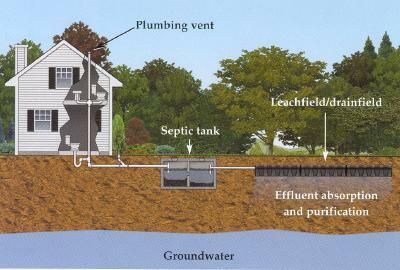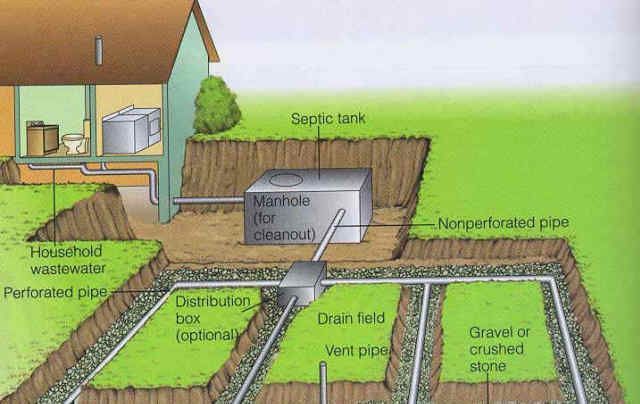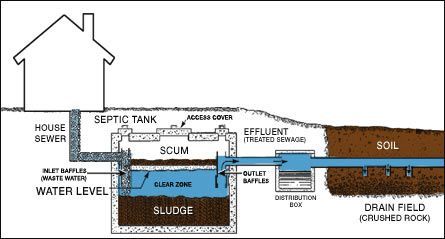Components of a Septic System
Plumbing and waste system
If you are like most people, you know very little about your septic tank system. This is understandable. In urban and suburban areas there are sewers to carry household waste to municipal wastewater treatment facilities. In more rural areas, however, septic tank systems provide the functions of both sewers and treatment facilities.
All household waste is disposed of through the septic system. The proper operation of the septic system is essential to public and private health, to property values, and to the environment. To see if you know enough about your septic system, answer the following questions. IF you cannot answer all the questions, your septic system could become a huge aggravation, public nuisance, health hazard and financial burden.
- Do you know what a septic tank is and how it works?
- Do you know what kind of soil absorption area you have and how it works?
- Do you know what causes septic systems to fail?
- Do you know what it cost to replace a failed septic system?
- Do you know how to keep a septic system from failing?
- Do you know that failed and failing septic systems contribute to pollution?
These are very serious questions. The health of your family and the value of your property rely heavily upon the answers to these questions.
“An ounce of prevention is worth a pound of cure” was never more true than it is with septic tank care. A small commitment to the care of your septic system will protect you indefinitely from the nightmare created by a failing system.



How does it work?
A typical septic system has four main components: a pipe from the home, a septic tank, a drainfield/leachfield, and the soil. Microbes in the soil digest or remove most contaminants from wastewater before it eventually reaches groundwater.
Pipe from the house:
All of your household wastewater exits your home through a pipe to the septic tank.
Septic Tank:
The septic tank is buried, watertight container typically made of concrete, fiberglass, or polyethylene. It holds the wastewater long enough to allow solids to settle out, forming sludge, and oil and grease to float to the surfance as scum. It also allows partial decompositions of the solid materials. Compartments and a T-shaped outlet in the septic tank prevent the sludge and scum from leaving the tank and traveling into the leachfield/drainfield area.
Leachfields/drainfields:
The wastewater exits the septic tank and is discharged into the leachfield/drainfield for further treatment by the soil. The partially treated wastewater is pushed along into the leachfield/drainfield for further treatment every time new wastewater enters the tank.
The most common leachfield/drainfield consists of a series of trenches containing perforated pipe surrounded by septic rock, or gravel, and covered with mesh and dirt. The effluent entering the leachfield/drainfield is partially absorbed into the soil and partially evaporated. the leachfield/drainfield should not be driven on or covered by a driveway or patio.
If the leachfield/drainfield is overloaded with too much liquid, it will flood, causing sewage to flow to the ground surface of create backups in plumbing fixtures and prevent treatment of all wastewater
Soil:
Septic tank wastewater flows to the leachfield/drainfield, where it percolates into the soil, which provides final treatment by removing harmful bacteria, viruses, and nutrients. Suitable soil is necessary for successful wastewater treatment.